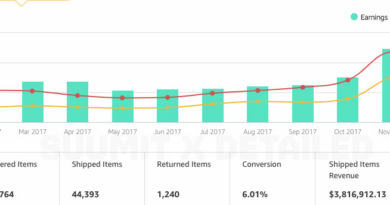Why on-site search should be a priority for marketers
“Content has become the primary tool that we use to create a dialogue with our prospects and to cultivate relationships with our customers online,” said Stephen Rahal, director of product marketing at Coveo, at SMX Next. “That content must be relevant and valuable. It also must be interactive to win their attention and draw them into a conversation.”
“Content has always been the best way to do marketing, and making your company the expert in your niche via content is the way to go,” he added.
Knowing what audiences want is key to creating high-quality content, and many marketers are looking for tools to help them with this process. Yet the overabundance of information in digital spaces can make it difficult to know what customers want from your organization — marketers need a solution that cuts through the noise and draws actionable customer insights.
“If SEO and SEM are getting people to your sites, how can you optimize that experience when they arrive?” Rahal asked. “How can you make sure that you’re not turning people off by failing to deliver the compelling search and navigation experience on your website?”
According to him, on-site search fits the bill.
Here are three reasons why on-site search is critical to your organization’s digital success.
On-site search provides user intent data
“The goal of a [site] search engine is obviously to return the best results for your query,” Rahal said, “And understanding language is crucial to returning the best results.”
“The way people search is often different from the content created around a brand,” he added.
Your site search box is a great tool for understanding how people use language. It shows marketers what words their audience uses, which can reveal user intent. This information goes beyond basic keyword research by providing more precise, real-time insights that marketers can leverage in their content pieces.
“When users perform a search against an engine, they provide their intent, the query that they’re looking for,” Rahal said. “Basic [on-site] search engines are performing a keyword search and matching words in the query with the words in your documents or your products on top of that basic keyword search. There are platforms that might gather a wide array of signals that are utilized to increase relevancy.”
He added, “The insights that can come from the search box are extremely powerful.”
Google Analytics offers a helpful site search report to assist marketers in this process. You can use it to organize search terms and analyze user behavior.
Get the daily newsletter search marketers rely on.
On-site search can enhance searcher experiences
“People don’t lie to their search box,” said Rahal. “People are very forthcoming when they enter a search query, and it can become one of the greatest resources you have for customer experience.”
On-site search data insights can help marketers create better website experiences. Whether it’s pinpointing what types of content searchers are most interested in or determining how easy it is for them to find the most important pages, site search has the potential to drastically improve user engagement.
“Investing in site search can not only provide you insights about the language of your customers and how they think and what they’re looking for, but it can also help you optimize the experiences that you’re creating within your properties themselves,” Rahal said.
He pointed to a North American telecommunications company his organization worked with, which is using on-site search data to inform what type of content they’re presenting to visitors. They began intermingling marketing and resource content, which helped them improve shopper conversion rates and reduce zero-result searches.
Site search can help improve conversion rates
Rahal then pointed to a North American jeweler Coveo worked with that optimized its on-site search and recommendation functionalities. This process led to better web experiences, and, as a result, higher conversion rates.
“[The company] almost discontinued a product until they saw their search data,” he said. “They had a product that was doing great in the wholesale channel, but not so well on the retail side, and it wasn’t until they dug into the search query data that they discovered that it was the most searched product by consumers.”
In this brand’s situation, the issue wasn’t lack of interest, but a problem with product supply. The marketing team had no idea on-site searchers were looking for that low-stock product. So, the search data encouraged their brand to stock more of that product. As a result, the brand’s e-commerce purchase conversion rate increased by 587%.
“The idea here is that site search can be a great tool,” Rahal said. “It can help you not only improve your search marketing, but also enhance your business as a whole.”
Watch the full SMX Next presentation here (free registration required).
New on Search Engine Land



